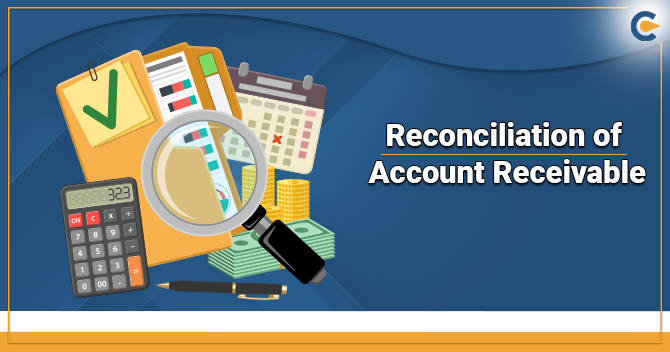For organizations, managing accounts receivable presents significant issues that must be skill fully handled to preserve financial stability. Keeping track of payments, handling outstanding invoices, and guaranteeing timely collections are all part of the accounts receivable management. One significant obstacle is the problem of late payments, which can impede liquidity and cause cash flow problems. Furthermore, firms need to strike a balance between giving credit to clients and lowering the possibility of bad debts; thus, managing credit risk is still a top priority. These problems are made worse by inefficient collection methods, necessitating the development of strong tactics for collecting unpaid invoices without jeopardizing client relations. Among these common accounts receivable problems, the entities should be proactive and deploy ways to streamline the cash collection process through which the cash flow can be maintained, and the business activities can proceed in a way the company/ business intends to.
Challenges in Accounts Receivable
The Common Challenges in Accounts Receivable may include –
Customer delay
The most common Accounts Receivable problem is a delay in payment by the customers. Most businesses face this problem one time or the other which hampers their growth. To overcome this issue, they need to devise a proper strategy and take follow-ups from these customers daily to keep track of the payment and also to be prepared accordingly. These types of Challenges in accounts receivable are faced by businesses that depend on the customer, and no one can do anything since it is the customer who has to pay money, but keeping track and proper follow-ups may lead to early payments, thereby not hampering business activities.
In-Proficiency in Business Activities
If the business activities are not aligned with the changing times, then it is almost certain that the business will lack proficiency. If the business activities involve the manual listing of sales, then it would be very tough for anyone to keep track of payment or even realize shortly whose payment is pending. This impacts the cash flow of the business a lot, which is eventually bad for their day-to-day operations and growth. These common accounts receivable problems should be avoided by businesses, and only then the cash flow will be streamlined, and the management will be able to make proactive decisions to get the cash flow going.
Improper Accounts Receivable Management
Corporations with improper accounts receivable management face difficulties in managing their cash flow properly. In this rapidly changing world, if businesses have improper accounts receivable management, then it will be very difficult for them to survive in the market. They need to keep a check on the day’s sales outstanding (DSO)so that they can make quick and efficient decisions regarding the payments that are not received or likely not to be received in the coming days. The improper management may lead to less profitability, and thereby, the chances of expansion of the business would become bleak.
Manual Operations
If there is a manual remittance process in the organization, then it will lead to delays in processing operations, which in turn will lead to disintegrated cash flow. Manual work needs a lot of effort, and the margin of error is much less, so the chances of mistakes are very high, and this leads to high time consumption and waste of resources that can be used for strategic planning. Manual work needs a lot of dedication, and the risks involved in mismanagement of financial transactions are high, which is a challenge in itself since it may lead to business loss and even bitter client relations.
Insufficient Scalability in Accounts Receivables
A common accounts receivable problem is that their insufficient scalability may lead to not adapting to the growing business needs, which in turn will lead to less profitability in business and failure in expanding the organization. Less scalability often leads to inefficient processes, an increase in the number of human errors, and problems faced in data management of the entity as well as of the client.
Inadaptability to new Payment Methods
With the rapid growth in technology, some business owners face Challenges in accounts receivable in terms of receiving payments in a mode as suitable for the customer. The payments can be made through credit cards, UPI, debit cards, share transfers, and many more, and if the entity is rigid in terms of payment mode and is not open to payments other than cash, then it will be very difficult for them to maintain the cash flow and be amongst the growing entities in the country. The world is going digital, and businesses need to accept all payment modes. They should also think about accepting shares, bonds, or any other kind of digital currency as it will increase the cash flow and also lead to client ease.
Ledger Maintenance
One of the other Challenges in accounts receivable, that a business face is improper ledger maintenance. A proper ledger must be maintained by them to get a clear picture as to how much cash is to be received from the market, what is due to the other dealers at their end, etc. It lets you be certain about how much payment will be received in a particular period and by whom. Maintaining a proper ledger will keep you at bay with the cash flow and help you manage your accounts and operations accordingly so that the business has the working capital till the payment is received.
How to overcome Challenges in Accounts Receivable
Certain ways through which any business can overcome the Challenges in Accounts Receivable are –
Reduction in Day’s Sales Outstanding
One of the best ways to overcome the Challenges in Accounts Receivable is to reduce the DSO with proper strategies that will help the process of money collection become simpler and easier. There should be proper invoicing and debt collection strategies in place, like e-invoicing, which speeds up the process, and once the invoice is made and delivered to the client, the tracking of payment also gets easy. The DSO can also be reduced if the client activates auto pay on all their purchases, which is eventually beneficial for facing challenges in accounts receivable. Early payment discounts can also be attached so that you can receive funds much earlier, which will eventually benefit the business in the long term.
Digital Payment Acceptance
Businesses can maintain their cash inflow if they start receiving payments in the methods opted for by their clients. In this digital era, one should accept payments digitally, and apart from cash and digital payments through UPI or bank servers, one should also look for other payment modes like accepting shares, bonds, debentures, and even crypto. The more methods you use, the more are the chances of receiving the payments on time. Hence, businesses should at least accept digital payments.
Improved Ledger Management
Proper and well-strategized management of the ledger may reduce most of the problems faced by the business in maintaining the cash flow in the organization. It gives accurate data as to whose payment is due in the coming days, who has made the payment, and who needs to be sent a reminder. Many payments are over-delayed because there is no intimation of payment or no proper communication of the probable payment date. It will also help reduce the work of managing so much of the clients’ database and resource usage, which ultimately can be applied in other prospects like making business strategies.
Implying Automation
Challenges in accounts receivable can be negated if the process is automated, through which the client is notified automatically about the coming payments and the delay in payments. Automation will also reduce human errors, which cause significant problems in maintaining the accounts receivable register. The collection process becomes smoother since the clients know the date of payment, and he/ she can make efforts to arrange payment in advance of the payment date.
Technological Enhancement
The business should delve more into technologies and reduce the manpower from doing these kinds of tedious tasks to reduce the challenges in accounts receivable. These accounting operations require so much focus and dedication to do the task, and it is not uncommon for human errors to take place in such works. With the introduction of technology, these works can be handled without any errors, thereby making the linear cash flow in the entity. Apart from these errors, the other benefit of technological advancement is that manpower can be used in places where there is a need for strategic development and requires individual expertise.
Reducing Customer delay in payments
Customer delaying payments is the most problematic part of business transactions. Most businesses face the problem where the payment of their goods is delayed even after their delivery, and it needs to be maintained to make the cash flow in the business. There are certain ways through which these payments can be taken without much delay and will negate the Challenges in Accounts Receivable –
- Sending them pre-payment reminders before the due date will make them conscious about the payment, and they will try to arrange the payment before the due date.
- Sending them payment-due reminders after the due date has passed will notify them about the payment.
- Offering them discounts on payment before the due date will make them pay before the due date to avail of benefits. It will enrich the client relationship as well.
- One can also give customers credit for their next purchase, which will lure them to make early payments and get the client to come for the next purchase.
Conclusion
The business has to face many challenges in accounts receivable while it commences in the market, and it has to come up with various strategies to overcome these challenges and grow rapidly in a good business environment. The management of the company needs to deploy policies that will be applied to generate good cash flow in the business. Without proper cash flow, no business can flourish, and the main source of cash flow in a business is the money generated from the sales of products and services. So, the accounts of the business need a proper check, and if there is a need to take any actions to improve them, it should be taken immediately.
Corpbiz can help these suffering businesses get their cash flow on track, not worry about this aspect, and just be involved in strategies for business growth and development. The experienced persons in our organization have already helped so many businesses make their cash flow smooth and intact, and there is no doubt that we can help you efficiently as well.
Frequently Asked Questions
What is the most common accounts receivable problem in business?
The most common Accounts Receivable Problem is a delay in payment by the customers. Most businesses face this problem one time or the other which hampers their growth. To overcome this issue, they need to devise a proper strategy and take follow-ups from these customers daily to keep track of the payment and also to be prepared accordingly.
What challenges are faced if a business involves manual sales listing?
If the business activities involve the manual listing of sales, then it would be very tough for anyone to keep track of payment or even realize shortly whose payment is pending. This impacts the cash flow of the business a lot, which is eventually bad for their day-to-day operations and growth.
What are a few Accounts Receivable Problems?
Though there are many accounts receivable problems, the most important ones are ledger maintenance, customer-delayed payments, lack of automation, and limited options in payments.
What is meant by the accounts receivable cycle?
The accounts receivable cycle starts when the sale of the product or the service is made to the customer, and the delivery of such sale is completed. It goes on till the invoice of such sale is given to the customer and the entity has received the payment for such product or service.
What is the job of the accounts receivable team?
The accounts receivable team is responsible for all the cash flow that involves invoicing, deductions (if any), collection of payments, cash application, credit risk, and other related work.
What are Accounts Receivable and Accounts Payable?
Accounts Receivable refers to the cash or money that your customer owes towards your business for availing goods or services from you, while Accounts Payable refers to the payment which you owe to others while rendering their service or buying their product/s.
What is meant by Accounts Receivable turnover ratio?
The accounts receivable turnover ratio is a basic system that shows how capable your business is of collecting the debts from the market and extending the credit. The simple step to calculate is to divide net credit sales by average accounts receivable; if the ratio is on the higher side, that means your business is good at managing customer credit.
Read Our Article: Strategies to Improve Account Receivable Collections











